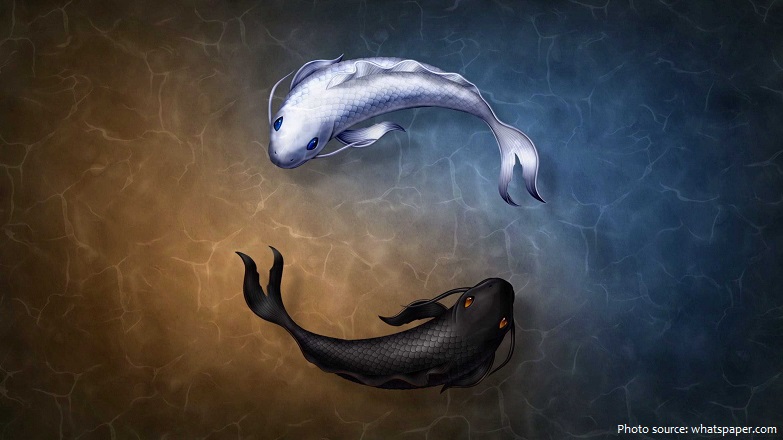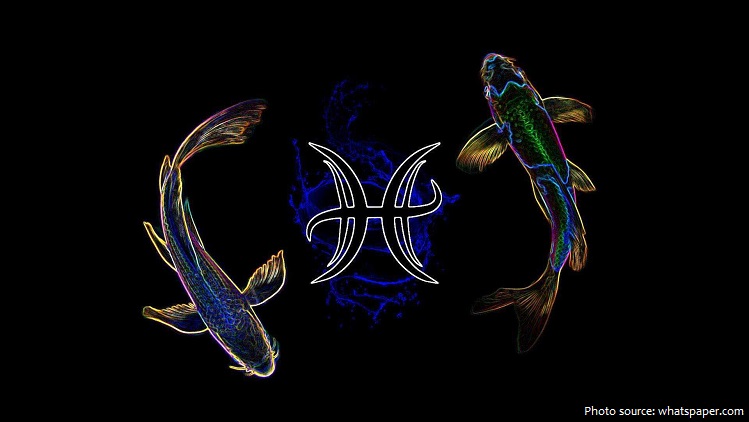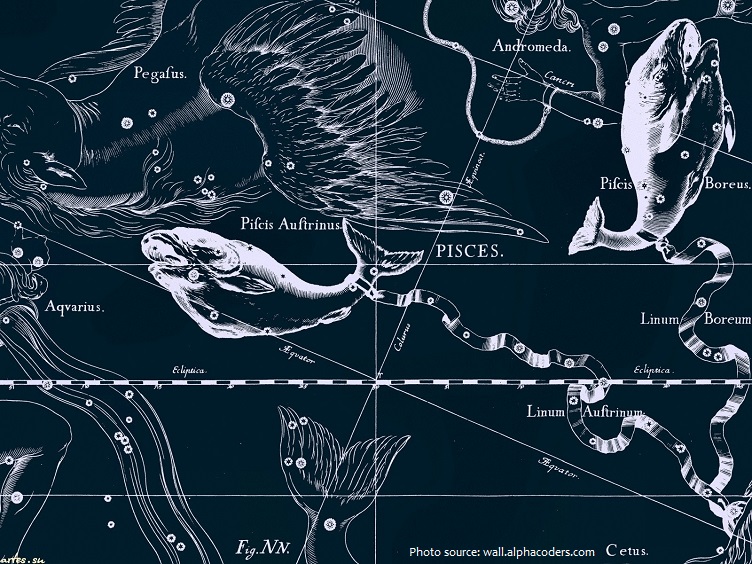
Pisces is the twelfth and final astrological sign in the zodiac.
Pisces is Latin for fish.
Its symbol is ♓︎.
The traditional Western zodiac associates Pisces with the period between February 19 and March 20, and the sign spans the 330°–330° of celestial longitude.
It is a negative, mutable sign.

Pisces is a water sign symbolized by two fish swimming in opposite directions.
Pisces are very friendly and often find themselves in company of very different people. They are selfless and always willing to help others, a very fine intent for as long as they don’t expect anything much in return. People born with their Sun in Pisces have an intuitive understanding of the life cycle and form incredible emotional relationship with other humans on the basis of natural order and senses guiding them.
Ruling planets of the sign of Pisces and Neptune and Jupiter, and intuition is the strongest suit of their kind.
It is one of the earliest zodiac signs on record, with the two fish appearing as far back as c. 2300 BC on an Egyptian coffin lid.

Divine associations with Pisces include Poseidon/Neptune, Aphrodite, Eros, Typhon, Vishnu and the Sumerian goddess Inann.
According to one Greek myth, Pisces represents the fish, sometimes represented by a shark, into which Aphrodite (also considered Venus) and her son Eros (also considered Cupid) transformed in order to escape the monster Typhon. Typhon, the “father of all monsters,” had been sent by Gaia to attack the gods, which led Pan to warn the others before himself changing into a goat-fish and jumping into the Euphrates.
A similar myth, one in which the fish “Pisces” carry Aphrodite and her son out of danger, is resounded in Manilius‘ five volume poetic work Astronomica: “Venus ow’d her safety to their Shape.”
Another myth is that an egg fell into the Euphrates river. It was then rolled to the shore by fish. Doves sat on the egg until it hatched, out from which came Aphrodite. As a sign of gratitude towards the fish, Aphrodite put the fish into the night sky.
Because of these myths, the Pisces constellation was also known as “Venus et Cupido,” “Venus Syria cum Cupidine,” “Venus cum Adone,” “Dione” and “Veneris Mater,” the latter being the formal Latin term for mother.

Purim, a Jewish holiday, falls at the full moon preceding the Passover, which was set by the full moon in Aries, which follows Pisces. The story of the birth of Christ is said to be a result of the spring equinox entering into the Pisces, as the Savior of the World appeared as the Fisher of Men. This parallels the entering into the Age of Pisces.
An astrological age is a time period in astrology that parallels major changes in the development of Earth’s inhabitants, particularly relating to culture, society and politics, and there are twelve astrological ages corresponding to the twelve zodiacal signs. Astrological ages occur because of a phenomenon known as the precession of the equinoxes, and one complete period of this precession is called a Great Year or Platonic Year of about 25,920 years.

The age of Pisces began c. AD 1 and will end c. AD 2150. With the story of the birth of Christ coinciding with this date, many Christian symbols for Christ use the astrological symbol for Pisces, the fishes. The figure Christ himself bears many of the temperaments and personality traits of a Pisces, and is thus considered an archetype of the Piscean. Moreover, the twelve apostles were called the “fishers of men,” early Christians called themselves “little fishes,” and a code word for Jesus was the Greek word for fish,
“Ikhthus.” With this, the start of the age, or the “Great Month of Pisces,” is regarded as the beginning of the Christian religion. Saint Peter is recognized as the apostle of the Piscean sign.
Pisces is one of the largest constellations in the sky. Its vast bulk – and main asterism viewed in most European cultures per Greco-Roman antiquity as a distant pair of fishes connected by one cord each that join at an apex – are in the Northern celestial hemisphere.

The vernal equinox, the point where the Sun’s annual apparent path takes it north of the celestial equator and from which celestial longitude and right ascension are measured, lies in Pisces.
The constellation contains only faint stars without any striking grouping – the brightest star, Eta Piscium, has a magnitude of 3.6.
Pisces originates from some composition of the Babylonian constellations Šinunutu4 “the great swallow” in current western Pisces, and Anunitum the “Lady of the Heaven”, at the place of the northern fish. In the first-millennium BC texts known as the Astronomical Diaries, part of the constellation was also called DU.NU.NU (“the fish cord or ribbon”).